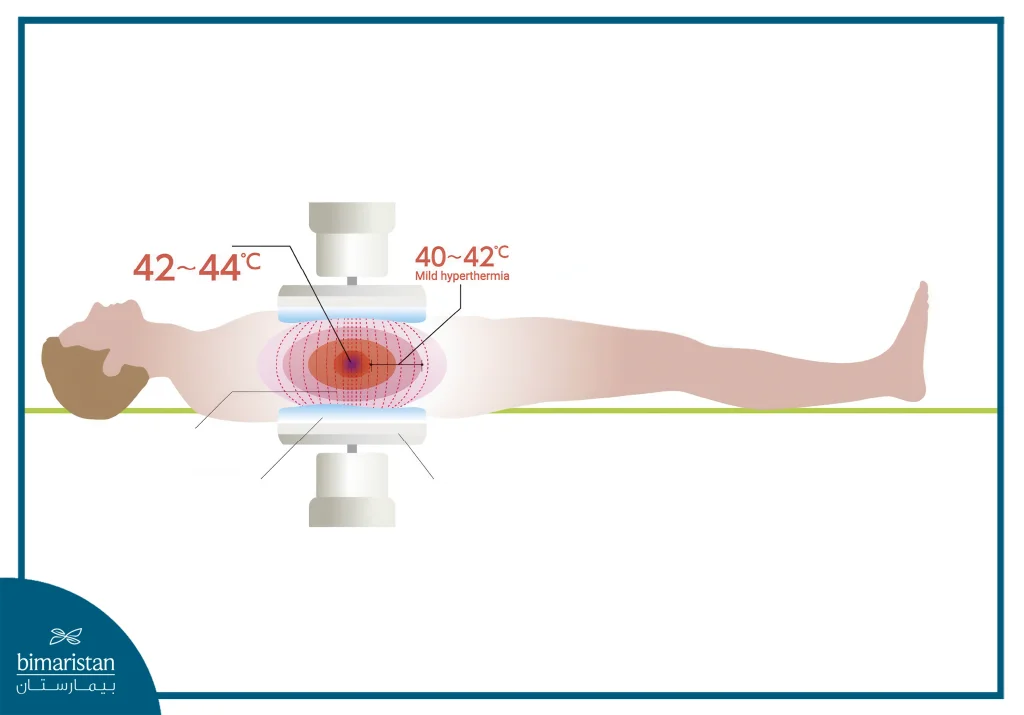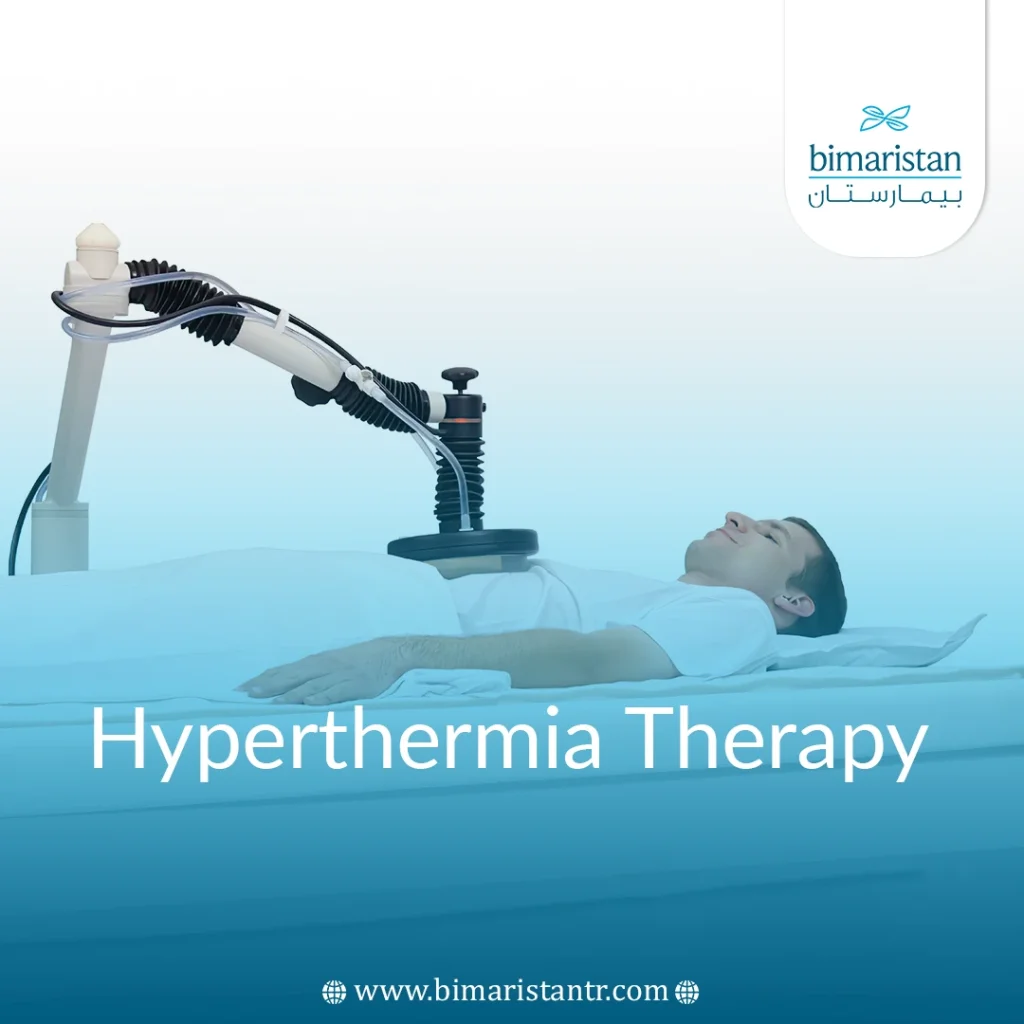As the incidence of cancer increases, studies on hyperthermia therapy for cancer have increased, as cancer cells have been found to be sensitive to heat, and the treatment has been implemented in Turkey.
In recent times, cancer has been a big issue due to the food, drugs, and various environmental factors that people are exposed to on a daily basis, and often, we don’t realize that we have cancer until the final symptoms appear or by chance.
Therefore, a great challenge emerged to develop new effective treatments with the least possible harm to the patient, as cancer diagnosis methods in Turkey have evolved significantly, and the question remains whether all cancers can be treated, even if they are resistant to standard treatments.
Therefore, in this article, we will mention a recent method in the field of cancer treatment, especially in the field of hyperthermia therapy for cancer treatment.
Hyperthermia therapy for cancer and what patients need to know about it
The use of chemotherapy, radiation, and sometimes hormonal therapy is the most preferred option in cancer treatment, as it can be treated with one of the two methods as in prostate cancer or with both methods as is common.
Recently, however, the application of heat therapy or so-called “hyperthermia therapy”, which is defined as a type of interventional radiation therapy, has been introduced.
Another method that can increase the effectiveness of both chemotherapy and radiation therapy is raising the temperature of the target area. This method targets the affected area by concentrating heat on it, which makes it more sensitive to the treatment, whether radiation or chemotherapy. It has been shown to increase the effectiveness of the treatment by 2-5 times.
Before we dive into the advantages, disadvantages, and costs of hyperthermia therapy for cancer, we must understand the mechanism of cancer in order to be better educated on the subject.
What is cancer?
Cancer occurs when an uncontrolled multiplication of cells occurs in an organ or tissue, although there are many different types of cancer, they all begin with an uncontrolled multiplication of cells that begin to spread and cause damage to normal cells.
Tumors can be divided into benign and malignant tumors, where the difference lies in the absence of any uncontrolled reproduction of cells again after the removal of a benign tumor, while in a malignant tumor, the abnormal cells return again to divide and multiply uncontrollably with a tendency to spread to other parts of the body.
Cancer can also vary by gender, age, race, skin color, and environmental and genetic factors.
Some cancers can be recognized by certain symptoms that characterize them in addition to their shape, density, and structural characteristics. However, most cancers can go undetected for many years despite reaching advanced stages, and this is the main reason for the death of 19.7 percent of patients who are diagnosed with cancer.
Hyperthermia therapy has emerged as a potential method for improving cancer treatment outcomes, especially in advanced stages.
Traditional treatment methods and hyperthermia therapy for cancer treatment in Turkey
The main advantage of this method is that it can be performed under local anesthesia without the need for lumbar or general anesthesia and without any side effects.
So, there will be no potential issues for elderly patients with high-risk diseases such as heart disease, Alzheimer’s, paralysis, or patients on anticoagulants who are afraid of bleeding.
Recently, microwave thermal therapy has become widely used in cancer treatment and has become a highly preferred method, especially given the many side effects left by radiation therapy. With its increased effectiveness and reduced side effects, it could become the most preferred treatment among the therapies used to eliminate cancer molecules.
The patient lies comfortably on the treatment bed during the treatment period, which lasts an average of 60 minutes.
RF waves of adjustable power are directed to the tumor area with two opposing electrode heads, and a high temperature of 42-44 degrees Celsius is reached.
This high temperature destroys the cancer cells and the vessels that feed the cancer.
- Exposing cancer cells to localized heat during cancer chemotherapy
Types of Cancer Thermotherapy in Turkey
- Local hyperthermia therapy: This treatment is used for tumors close to the surface of the body. It involves placing a water-filled wand over the treatment area. Microwave or ultrasound (or echo) energy is then focused at the tumor site, heating a small body area.
- Regional hyperthermia therapy: For tumors deep in the abdomen or pelvis (i.e., deep organ tumors), it involves a larger area of the body, usually to weaken tumor cells before radiation or chemotherapy.
- Whole-body hyperthermia therapy: This type of cancer heat therapy involves the entire body, raising the body temperature to approximately 39-40°C. It is used to treat metastatic tumors.
Regional hyperthermia application areas for tumor treatment
- Primary tumors or tumors that have spread (metastasized).
- Organ tumors (bladder cancer, kidney cancer, lung cancer, etc.).
- Digestive system cancers (such as liver cancer, pancreatic cancer, colon cancer, bowel cancer, stomach cancer, and peritoneal cancer).
- Tumors of the hip (pelvic) area.
- Malignant head and neck cancers (ear cancer).
- Brain tumors or tumors that have spread to the brain (metastasis).
- Breast, uterine, and ovarian cancer in women.
- Prostate tumor.
- Skin cancer.
- For superficial skin tumors.
All tumors that are difficult to treat surgically.
Mechanism of action for applying thermotherapy technology for cancer
First: Beginning in Cancer Thermotherapy Cancer cells undergo apoptosis (programmed cell death) due to cellular stress and heat-induced damage.
Second: In typical cases, cancerous tissues are exposed to hypoxia (lack of oxygen) and an acidic environment.
This condition reduces the effect of chemotherapy drugs and radiation therapy on the cancerous tissue.
As temperatures increase, blood flow to the tumor increases, so the acidic environment decreases.
This leads to increased responses to the applied treatments.
Third: With heat, the production of “heat shock proteins” increases at the cellular level.
This increases the activity of immune cells known as natural killers (T-lymphocytes).
The production of tumor-specific antigens and the exit of antigens from the cell also increase.
Somehow, the masks that allow cancer cells to hide from the immune system fall off.
Thus, it becomes easier for the immune system to recognize the cancer.
Fourth: The structure of the capillaries that feed the tumor in cancerous tissue is different from normal vessels.
With localized hyperthermia, tiny clots (thrombi) form in these vessels, which affect the tumor’s nutrition.
Both whole-body and local hyperthermia facilitate the passage of antigen-presenting cells, specialized immune system cells, to the lymph nodes and the T-cell immune response in the “tumor zone.”

Results of some studies on radiofrequency ablation for cancer
All studies prove the increased effectiveness of chemotherapy when Radiofrequency hyperthermia is added. It is considered a fourth weapon added to the treatment of cancers, especially when combined with other treatments.

Ultimately, cancer treatment is a very broad field and is highly scalable. Cancer is one of the diseases of our time, and the Bimaristan Center strives to provide cancer patients with everything they need for treatment and a full recovery.
Sources:
